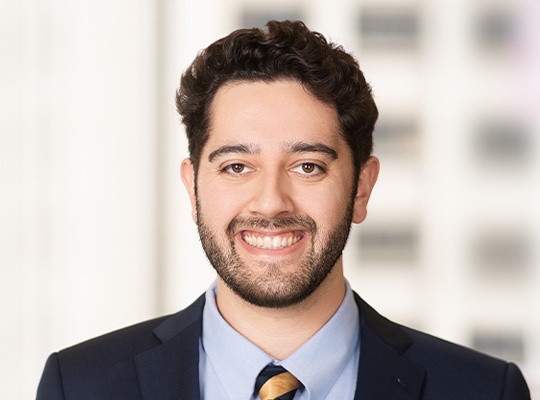Developments in Securities Fraud Class Actions Against U.S. Life Sciences Companies
Last year marked an increase in federal securities class action filings, with plaintiffs filing 225 cases in 2024, up from 215 in 2023. Life sciences companies remained popular targets, accounting for approximately one in five of these filings.1 In this report, we examine 2024’s filing and decision trends, providing insights for life sciences companies to prudently navigate the litigation landscape.

Plaintiffs filed a total of 50 securities class action lawsuits against life sciences companies in 2024, which represented over one in five securities class action lawsuits.
Filings against life sciences companies in 2024 represent an increase of over 15% from the prior year. Of these cases, the following trends emerged:
- The majority of suits were filed in the First, Second, and Ninth Circuits, continuing a trend of increased numbers of complaints being filed in the Ninth Circuit – 10 in 2022, 12 in 2023, and 14 in 2024. For district courts within these circuits, the Southern District of New York had the most filings, with 12 overall.
- A few plaintiff law firms were associated with about three-quarters of the first filed complaints against life sciences companies: Pomerantz LLP (22 complaints), Levi & Korsinsky, LLP (nine complaints), The Schall Law Firm (seven complaints), and The Rosen Law Firm, P.A. (six complaints).
- Moderately more claims were filed in the second half of 2023 than in the first half, with 29 complaints filed in the third and fourth quarters, and 21 complaints filed in the first and second quarters.

An examination of the types of cases filed in 2024 reveals continuing trends regarding the underlying claims from previous years.
- About 52% of complaints, or 26 of 50 complaints, involved alleged misrepresentations regarding product efficacy and safety, with many of these cases involving alleged misrepresentations regarding certain negative side effects or the general ineffectiveness associated with leading product candidates, which could potentially impact the likelihood of Food and Drug Administration (“FDA”) approval.
- About 34% of the complaints, or 17 of 50 complaints, arose from alleged misrepresentations involving regulatory hurdles, the timing of FDA approval, or the sufficiency of applications submitted to the FDA.
- About 6% of the complaints, or three of 50 complaints, involved misrepresentations related to COVID-19 related vaccines, products, or services.
- About 14% of the complaints, or seven of 50 complaints, were against non-U.S. issuers incorporated abroad.
- About 34% of the complaints, or 17 of 50 complaints, involved alleged misrepresentations related to the company’s financial reporting.
- About 20% of the complaints, or 10 of 50 complaints, involved alleged misrepresentations of material information made in connection with proposed mergers, sales, initial public offerings (“IPOs”), offerings and other transactions.2
Minimizing Securities Fraud Litigation Risks
Life sciences companies continue to be a popular target for class action securities fraud claims. While many of the companies discussed above were successful in defending against these claims, companies should be cautious and take steps to reduce the risk of being targeted in a securities fraud class action. Below is a list of practices that life sciences companies should consider:
- Consistency in Public Statements. Companies should strive to avoid any inconsistency in public statements and fight the urge to respond instinctively without identifying known risks or considering non-public information.
- Disclosure of Regulatory Setbacks. Many life sciences companies encounter regulatory setbacks, such as negative side effects in clinical trials, clinical trial failures, receipt of complete response letters, etc. When these are disclosed to the market, it may trigger a stock price drop. Companies should exercise care when making any disclosures to ensure that they accurately describe any negative results, including potentially negative information learned after the preliminary results are revealed. Companies also should ensure that internal disclosure regimens and processes are well documented and consistently followed.
- Adoption of a Disclosure Plan. Smaller life sciences companies are susceptible to securities class actions and should work with counsel to ensure that they adopt a disclosure plan. Disclosure plans should not be limited to reviewed and written disclosures made in press releases or SEC filings, but should also include any statements made by executives during analyst calls. Company websites should also be continually updated.
- Appropriate Disclosures that Cut Across Industries. Life sciences companies are not immune to issues that may cut across all industries, and accordingly they should be prepared to make appropriate disclosures relating to transactions, business prospects, operations, financials, etc. Companies should ensure they are staying informed regarding the acts of third-party contractors and manufacturers, and public statements are consistent with the actions of such parties.
- Consideration of Product Defects and Alternatives. Courts often have the benefit of hindsight to determine whether a product is defective by considering what defendants could or should have done differently. For example, courts often consider the existence of safer alternatives and the ability of defendants to eliminate a product’s dangerous characteristics. Companies should consider not only whether a given product is defective on its own, but how it compares to potential alternative designs or formulations and how its benefits weigh against any potential risks.
- Disclosures in Transactions. Because deal litigation and other combinations and partnerships continue with regarding to life sciences companies, material disclosures to investors relating to the transaction should contain detailed explanations about the history of the transaction, alternatives to the transaction, reasons for the recommendation, the terms of the transaction, fairness opinions, conflicts of interest, among other issues.
- Non-U.S. Issuers. Even if incorporated abroad, life sciences companies that are non-U.S. issuers may be targeted in the U.S. despite events occurring that may not be U.S. specific.
- Opinion Statements in Public Filings. Regarding statements made in public filings, courts continue to weigh in on opinion statements and the law is continuing to evolve. Be aware that opinion statements should be reasonably held and not conflict with information that would render the statements misleading.
- Forward-Looking Information. Forward-looking information about a drug or device should be clearly identified as such and distinguished from historical fact.
- Relevant Risk Disclosures. Risk disclosures that are current, relevant and upfront help to ward off securities class actions. Companies should ensure that public statements and filings contain not only general disclaimers relating to forward-looking statements but also appropriate “cautionary language” or “risk factors” that are specific and meaningful, and cover the gamut of risks throughout the entire drug product life cycle – from development to commercialization.
- Insider Trading Practices. Develop and publish an insider trading policy to minimize the risk of inside trades, including 10b5-1 trading plans and trading windows. Class action lawyers aggressively monitor trades by insiders to develop allegations that a company’s executives knew “the truth” and unloaded their shares before it was disclosed to the public and the stock plummeted. Regulators are also cautious that corporate insiders use Rule 10b5-1 plans in ways that are not consistent with the objectives of the rule and will start monitoring 10b5-1 trading plans that are canceled or terminated based on later-obtained material nonpublic information.
- Engage Experienced Legal Counsel. Work closely with experienced legal counsel who specialize in securities litigation and life sciences to help navigate and provide guidance on litigation risks.
- Evaluate Insurance Coverage. Review and evaluate the company’s and directors and officers insurance coverage to ensure it is adequate to cover potential litigation costs.
Footnotes
1 Throughout this survey, data from prior years is derived from Dechert LLP’s 2024 survey on the same topic. See David Kistenbroker, Joni Jacobsen, Angela Liu, Dechert Survey: Developments in Securities Fraud Class Actions Against U.S. Life Sciences Companies, Dechert LLP (Apr. 2024). The number of securities fraud class actions filed generally and in particular against life sciences companies is based on information reported by Cornerstone Research, Securities Class Action Filings: 2024 Year in Review (last visited Feb. 28, 2025). This survey includes litigation and cases involving drugs, devices, deal litigation, and hospital management. These figures are based on the first complaint filed.
2 It should be noted that the majority of all 2024 filings against life sciences companies fell into more than one category.




